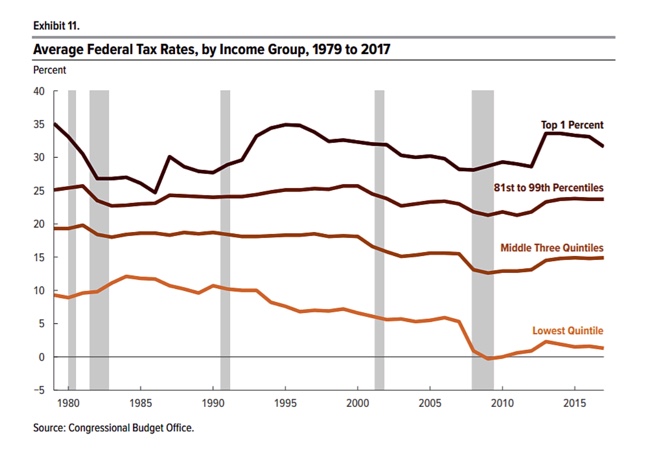How have federal taxes changed for different income groups historically?
At the beginning of this month, the Congressional Budget Office released a report that analyzed changes in income, benefit payments, and federal taxes by income group. Among here are charts that show how taxes have changed for different income groups between 1979 and 2017.
Taxes have fallen the most for low-income individuals
When it comes to average tax rates, the CBO states that “average federal tax rates declined most sharply among households in the lowest quintile, falling from a peak of 12.1 percent in 1984 to 1.3 percent in 2017”. Middle-income individuals also experienced a cut in average tax rates, but not a much as the cut experienced by low-income individuals. High-income individuals however experienced a more volatile movement in average tax rates.

Share of federal taxes
According to the CBO,
The share of federal taxes paid by households in the highest quintile increased from 55 percent in 1979 to 69 percent in 2017. That group’s share of income before transfers and taxes also increased over the period, although to a lesser extent than its share of federal taxes. Most of that 14 percentage-point increase in the federal tax share occurred in the top 1 percent of the distribution, whose share of all federal taxes rose by 11 percentage points, from 14 percent in 1979 to 25 percent in 2017. Those households’ share of income before transfers and taxes also rose, although to a lesser extent, from 9 percent in 1979 to 17 percent in 2017.

Overall, this report shows that the tax code, especially for federal income taxes, is progressive and has become so over time.